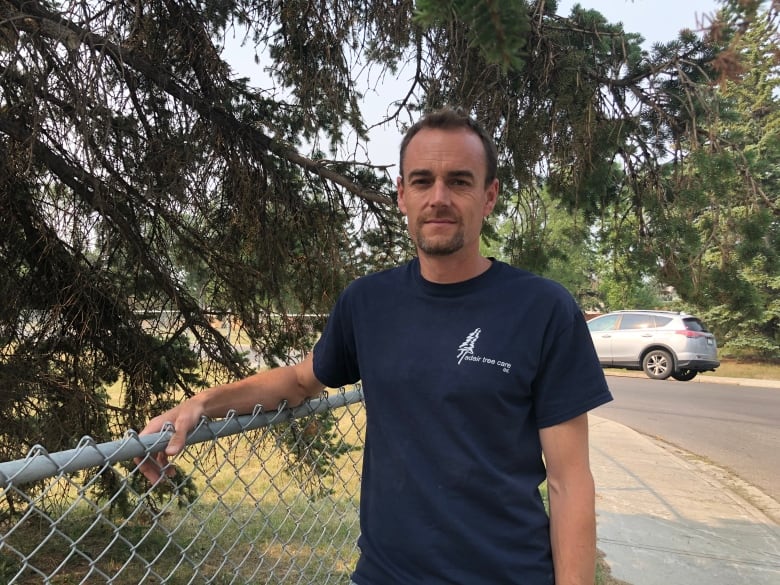Yellow leaves signs of hot, dry conditions rather than 'early signs of fall': arborist
City spokesperson says Calgary would need another few drought years before major impact to urban canopy

A Calgary arborist has been noticingmore signs of trees undergoing drought-related stress in the city following another hot, dry summer.
"The yellowing, that's kind of the first sign of fall, we kind of call it that now, but really that's a reaction to dry conditions," said Matt Davis, withAdair Tree Care.
He saidas trees dry out, they try to conserve their energy and their moistureby shedding leaves they don't need.
And, over time, these stressed-out trees become more prone to disease, saidDavis.
In particular, Davis said, he's seen poplar and spruce trees hit harder over his 15 years in the business.
Urban canopy at risk?
Calgary's urban canopy, which is a way of calculating the percentage of green coverage from trees' leaves within a municipality's limits, both on public and private lands, is currently at about 8.22 per cent.
The city's goal is to double that at a rate of 1 per cent growth per year.

A city spokesperson saidtrees in Calgary are generally resilient and accustomed to drought conditions.
"But if these conditions continue we will likely see early fall colour and a shortened growing season," said Trish Kluane, urban forestry supervisor with the city.
Overall, Kluane saidthe city's urban canopy can withstand isolated periods of droughts and will rebound in subsequent seasons.
She saidas a result she hasn't seen any major impact to the canopy.
"I would say probably if we had two to three consecutive seasons of drought like this we would start to see the impact," said Kluane.
Extra watering appreciated
The city saidit waters its newly planted trees for the first five years.
It saidit reduces the frequency of watering as the tree ages to encourage it to set out roots and better establish itself.
But, it said due to the drier conditions it has increased the frequency of its watering schedule for some trees planted in more challenging conditions, such as those planted in tree vaults in the downtown core or along centre meridians.

"Any supplemental water that citizens can provide the trees in front of their homes or in their own yards is greatly appreciated by both us and the trees," said Kluane.
Davis said watering lawns is different from watering trees.
Lawns need frequent, short bouts of watering, while trees need low intensity watering over a long period of time to get the water as deep as possible into the ground preferably early in the morning.
"You build drought tolerance into the trees that way because the water lower down doesn't evaporate as quickly," said Davis.
He also suggestedputting mulch or perennials around the base of treesto help the ground retain moisture.












_(720p).jpg)


 OFFICIAL HD MUSIC VIDEO.jpg)
.jpg)



























































































